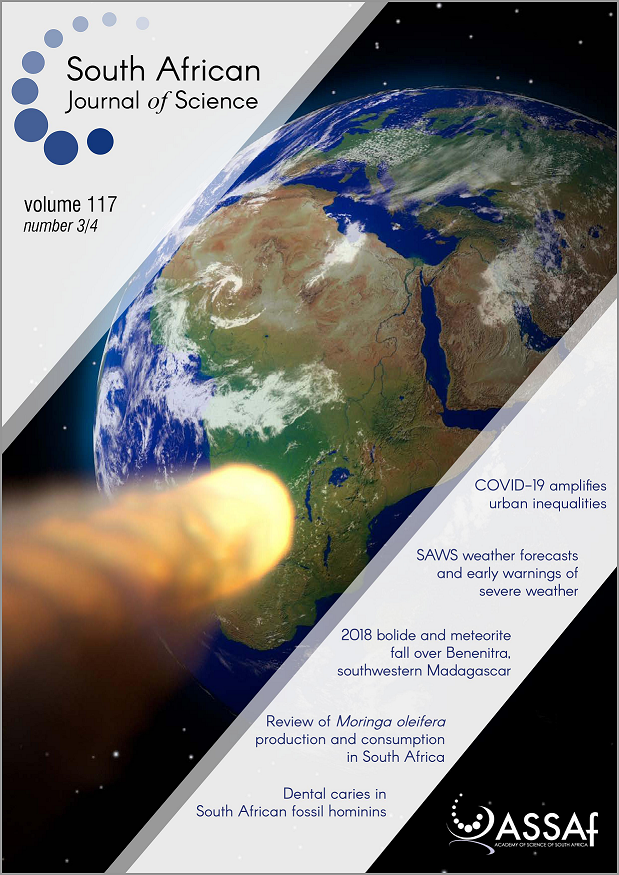Dental caries in South African fossil hominins
DOI:
https://doi.org/10.17159/sajs.2021/8705Keywords:
dental pathology, Homo naledi, Paranthropus robustus, diet, cariogenic bacteriaAbstract
Once considered rare in fossil hominins, caries has recently been reported in several hominin species, requiring a new assessment of this condition during human evolution. Caries prevalence and location on the teeth of South African fossil hominins were observed and compared with published data from other hominin samples. Teeth were viewed macroscopically, with lesion position and severity noted and described. For all South African fossil hominin specimens studied to date, a total of 10 carious teeth (14 lesions), including 4 described for the first time here, have been observed. These carious teeth were found in a minimum of seven individuals, including five Paranthropus robustus, one early Homo, and one Homo naledi. All 14 lesions affected posterior teeth. The results suggest cariogenic biofilms and foods may have been present in the oral environment of a wide variety of hominins. Caries prevalence in studied fossil hominins is similar to those in pre-agricultural human groups, in which 1–5% of teeth are typically affected.
Significance:
- This study adds to the growing evidence that dental caries was present throughout the course of human evolution. Caries prevalence in the fossil species studied is similar to those in non-agricultural human groups, with 1–5% of teeth displaying cavities.
- Differences in prevalence and position of dental caries can provide insight into dietary aspects of past populations. South African fossil hominins display lesions on their posterior teeth, suggesting sugary foods were consumed.
Published
Issue
Section
License

All articles are published under a Creative Commons Attribution 4.0 International Licence
Copyright is retained by the authors. Readers are welcome to reproduce, share and adapt the content without permission provided the source is attributed.
Disclaimer: The publisher and editors accept no responsibility for statements made by the authors
How to Cite
- Abstract 2153
- PDF 844
- EPUB 210
- XML 220












.png)